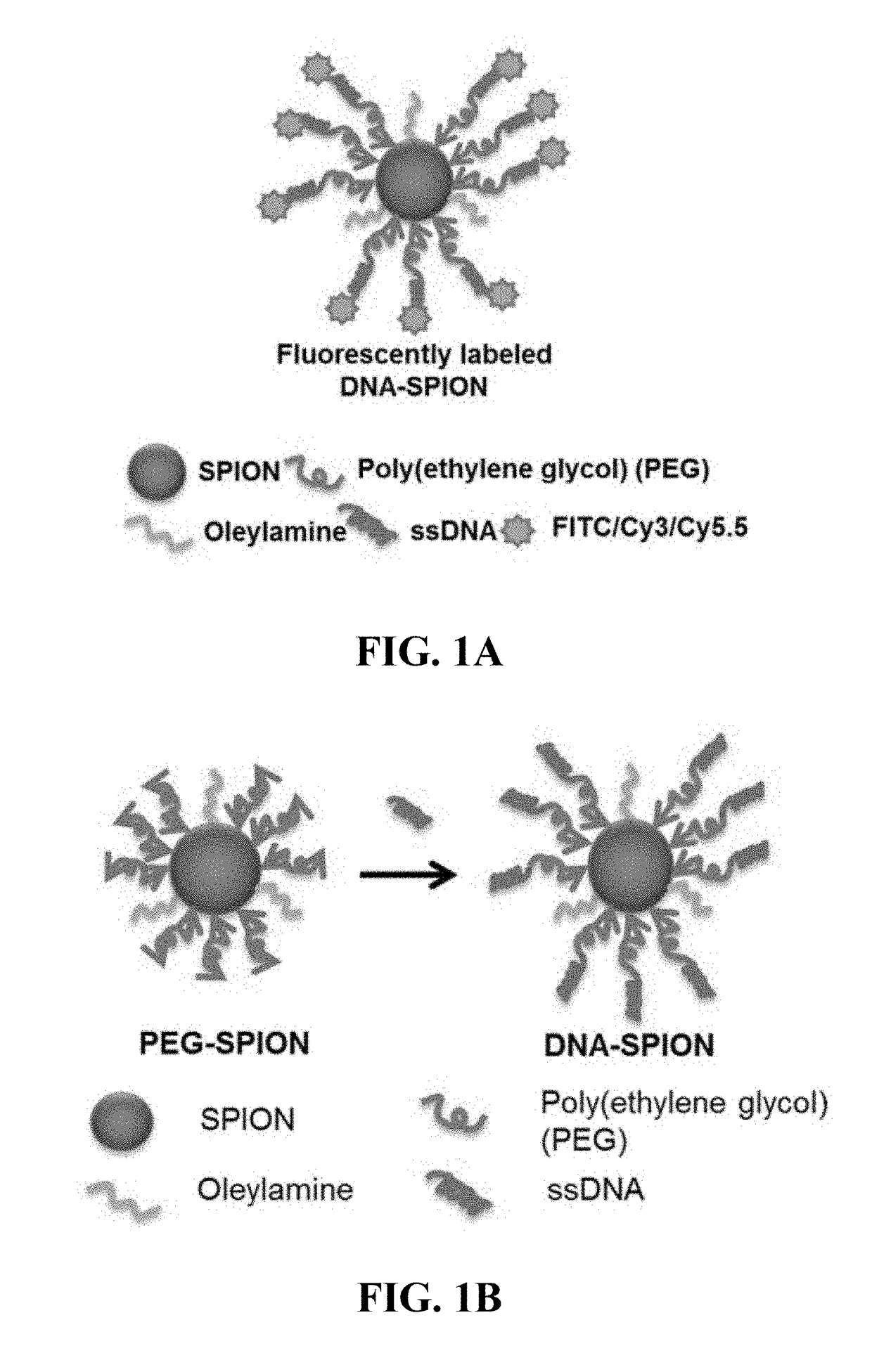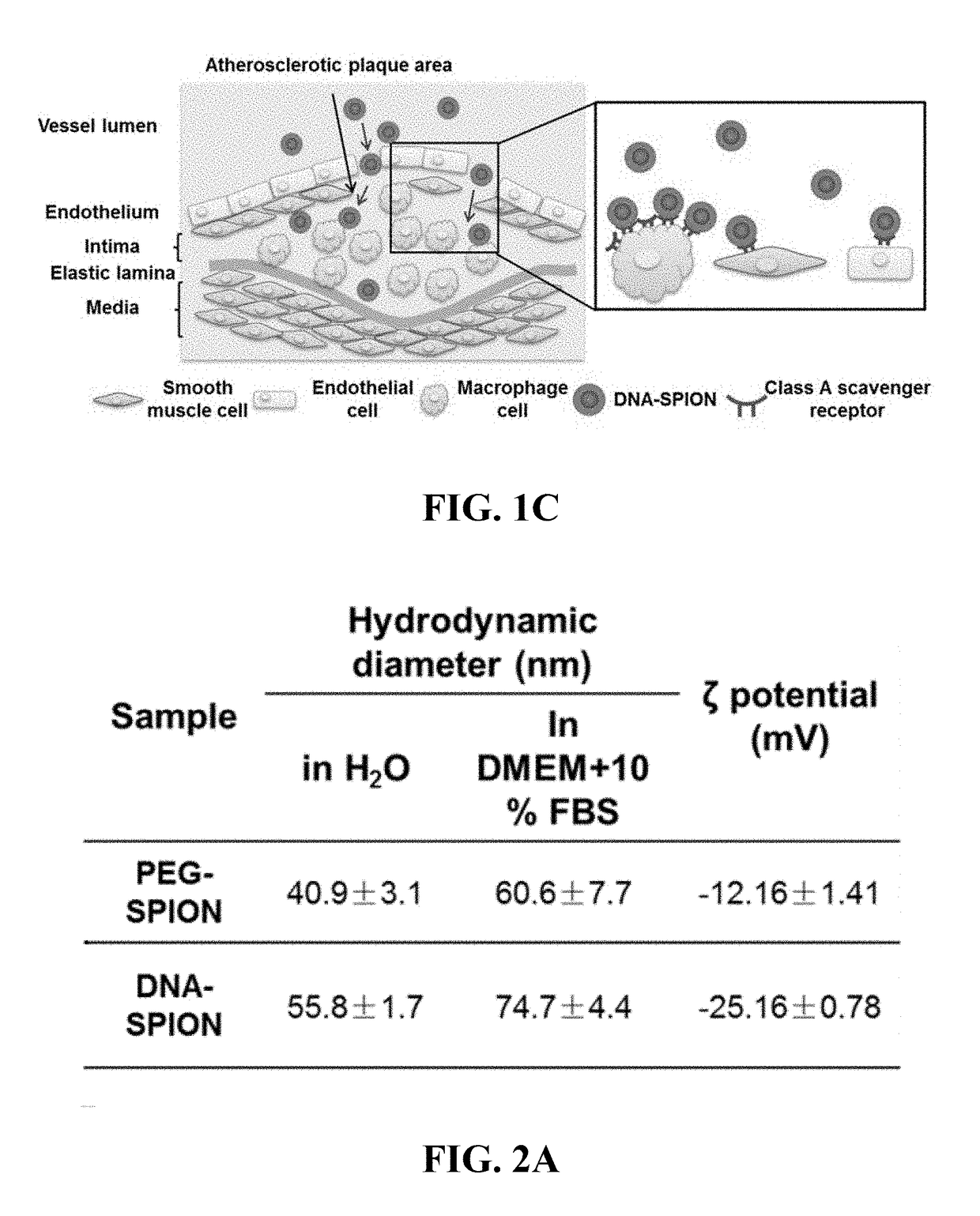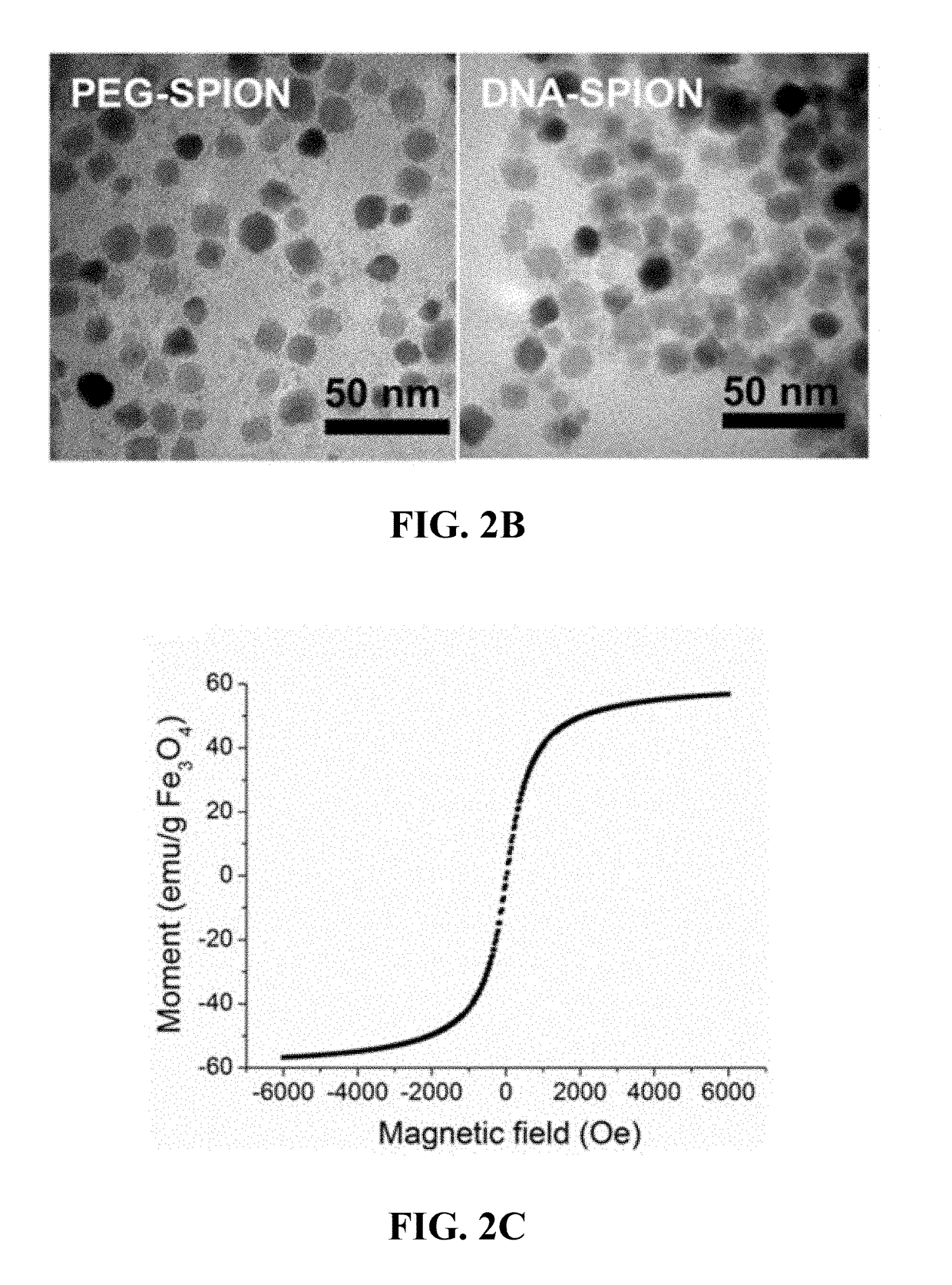Materials and methods for effective in vivo delivery of DNA nanostructures to atherosclerotic plaques
a technology of dna nanostructures and nanostructures, which is applied in the direction of capsule delivery, drug compositions, cardiovascular disorders, etc., can solve the problems of increasing cancer risk, difficult to accurately identify at-risk patients, and substantial residual risk still remains
- Summary
- Abstract
- Description
- Claims
- Application Information
AI Technical Summary
Benefits of technology
Problems solved by technology
Method used
Image
Examples
example 1
Characterizations of PEG-NPs, PEG-SPNs and / or PEG-SPIONs and DNA-NPs, DNA-SPNs and / or DNA-SPIONs
[0163]Although the core material of NP, SPN, and / or SPION-cored spherical nucleic acids does not affect their biological properties, their biocompatibility is still a great concern when NPs, SPNs, and / or SPIONs are used as in vivo delivery vehicles or imaging agents. Iron oxide nanoparticles were chosen as the model material due to their well-known biocompatibility and superior performances as MRI contrast agents. FIG. 1A shows the composition of fluorescently-labeled DNA-coated SPIONs (DNA-SPIONs), consisting of a SPION core, a dense poly(ethylene glycol) (PEG) layer and DNA conjugation in the outmost layer, which DNA is conjugated to a fluorescent molecule. Before DNA conjugation, the PEG-coated SPIONs (PEG-SPIONs) were synthesized from the high temperature decomposition of iron (III) acetylacetonate with PEG diacid and oleylamine as chelating agents (FIG. 1B, left). To the surface of a...
example 2
SR-A Expression on Different Cell Types and Cellular Uptake of DNA-SPIONs.
[0168]As shown in FIG. 1B, the major cell types in atherosclerotic plaques are monocyte / macrophage, smooth muscle cells and endothelial cells (40, 52). To probe the interaction of DNA-SPIONs with different types of cells representative of cells present inatherosclerotic plaques, the uptake of nanoparticles in four model cell types was studied in vitro, including mouse endothelial (C166), mouse smooth muscle (MOVAS) and mouse macrophage (RAW 264.7) cells. Since nanoparticles are known to be able to accumulate in organs of the mononuclear phagocyte system (MPS), including liver and spleen (55), mouse hepatocytes (AML-12) were also included for comparison. Before conducting cellular uptake studies, the cytotoxicity of PEG-SPIONs and DNA-SPIONs to the four types of cells was tested by MTT assay. In this MTT assay, PEG-SPIONs and DNA-SPIONs were incubated with cells for 24 hours (FIG. 4). No obvious cytotoxicity of...
example 3
Cellular Uptake Kinetics of PEG-SPIONs and DNA-SPIONs in RAW 264.7 Cells
[0173]The time-course uptake of both types of nanoparticles was studied by ICP-MS for measurement of iron content after incubation for different durations of time. During the first 8 hours of uptake, DNA-SPIONs associated with RAW 264.7 cells much faster than PEG-SPIONs (FIG. 6A). For example, 4 hours post-incubation, the iron content of cells treated with DNA-SPIONs was more than 5-fold higher than that of cells treated with PEG-SPIONs (0.89 pg / cell versus 0.17 pg / cell), validating the selective uptake of DNA-SPIONs over PEG-SPIONs by RAW 264.7 macrophages as shown in FIGS. 5C and 5D. The cellular association of DNA-SPIONs showed little increment in iron content between 8 hours and 16 hours, an observation potentially related to the doubling time of RAW 264.7 cells that is ˜12 hours for a standard plate set-up (56, 57).
[0174]Prussian blue staining, which turns content iron into blue signals and, thus, detects t...
PUM
| Property | Measurement | Unit |
|---|---|---|
| Fraction | aaaaa | aaaaa |
| Time | aaaaa | aaaaa |
| Fraction | aaaaa | aaaaa |
Abstract
Description
Claims
Application Information
 Login to View More
Login to View More - R&D
- Intellectual Property
- Life Sciences
- Materials
- Tech Scout
- Unparalleled Data Quality
- Higher Quality Content
- 60% Fewer Hallucinations
Browse by: Latest US Patents, China's latest patents, Technical Efficacy Thesaurus, Application Domain, Technology Topic, Popular Technical Reports.
© 2025 PatSnap. All rights reserved.Legal|Privacy policy|Modern Slavery Act Transparency Statement|Sitemap|About US| Contact US: help@patsnap.com



